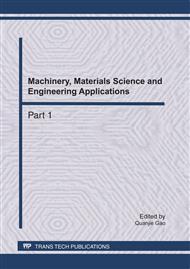p.505
p.509
p.514
p.519
p.526
p.532
p.537
p.542
p.548
Coupling Effect Analysis of 3D Interior Structural-Acoustic Problems Using Wave Based Method
Abstract:
This paper describes the basic concept of the new technique for the modeling of the structural-acoustic coupling between the pressure field in an acoustic cavity with arbitrary shape and the out-of-plane displacement of a flat plate with arbitrary shape. It is illustrated through a three-dimensional validation example that the new prediction technique yields a high accuracy. The effect of the cavity depth and the coupling interface area on the strength of mutual coupling interaction are discussed in detail.
Info:
Periodical:
Pages:
526-531
Citation:
Online since:
April 2011
Authors:
Price:
Сopyright:
© 2011 Trans Tech Publications Ltd. All Rights Reserved
Share:
Citation:


